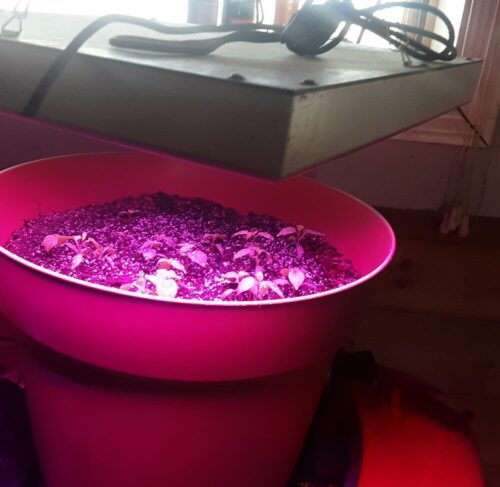
Hi there, K again (partnering with Phoenix on homesteading) continuing our discussion on gardening and common pitfalls.
When small-scale/ container gardening, one big thing to pay attention to is fertilizer selection and application. When you look at the bag, there are three letters (NPK) corresponding with different elements and their relative ratios in that fertilizer. N stands for nitrogen, P for phosphorus, and K for potassium. Depending on what you are growing, you may need more or less of each of these elements. Nitrogen is responsible for overall plant growth. If you want lots of lettuce, give your plant a lot of nitrogen. Phosphorus is mainly for root development, and when the plant is old enough, blossom development. If you want big carrots, beets, radishes, any root vegetables, give them high phosphorus fertilizers. If you see your plants developing blossoms, give them phosphorus so they’ll put out a lot more blossoms and develop more fruits. Potassium strengthens the plant structure by promoting lignin and cellulose growth, really important for the plant to bear the weight of the fruit. This is especially important for fruit trees, like plums and apples. Each of these are examples of plants we are growing or have grown on the homestead. Knowing the ingredients and proportions in your fertilizer makes a huge impact on what and how much you’ll be able to harvest.
Some common pitfalls in fertilizer applications are:
- Giving high nitrogen fertilizer to tomato plants but not enough phosphorus. You’ll get really leggy tomato plants without blossoms or fruit.
- Giving high phosphorus fertilizer to greens like lettuce and chard. You’ll get nice root development, but not much leaf growth.
- Using bloom booster too early, causing blossoms to develop at the wrong time when plants are still too young to support the weights of the fruits.
- Fertilizing plants when they’re water-stressed. Water them first, wait for them to recover, then fertilize them. Otherwise the fertilizer will create a condition of too much salt being in the soil, which will draw even more water out of the plant, causing fertilizer burn.
- Fertilizing when the plant is too young. Wait till the plant at least has its true leaves, not the cotyledons (seed leaves), which are attached to the seedling as it germinates. These true leaves will look different than the more oval seed leaves, looking like miniature leaves of whatever you’ve planted.
Other small scale/ container gardening pitfalls include:
- Planting at the wrong time of year. Typically, cool weather plants such as greens and root vegetables need to be planted in the fall or early spring. If planted when it’s hot, they just go straight to seed. Hot weather plants, mostly those that produce fruit, should be planted in early summer so they will flower when insects are active for pollination. Then as days get shorter, the plants will start allocating even more resources to reproductive growth.
- Planting and watering fine seeds incorrectly. Instead, start with moist soil. Put a thin layer of starter soil on top and sprinkle on the fine seeds. Put another thin layer of starter soil on top and gently pat down so the seeds have good contact with the soil. Use a garden mister to water the seeds, and continue using the mister when watering till the seeds germinate. Watering them with a regular hose or watering can will dislodge the seeds and destroy their roots before they ever get established.
- Planting and watering large seeds incorrectly. Before you plant large seeds like corn, beans, and peas, soak them overnight first. This allows the seeds to hydrate enough to germinate with regular watering when they’re planted.
- Using gardening strategies from the wrong growing zone. According to the US Department of Agriculture, there are 13 growing zones in the US, ranked by a variety of factors including plant hardiness and frost dates. Something that works really well on the east coast (maybe Zone 8 or 9) won’t necessarily work out west (Zone 6 where we are).
- Planting away from a water source. You’re going to get tired of hauling water out to the garden every day. Have a hose or water barrel set up near your plants so they don’t die and you don’t wear yourself out before you can even harvest from them.
Growing plants is far easier when as many variables as possible are controlled. We’ve moved most of our gardening indoors to greenhouses, hoop houses, and windowsills for this reason. With the weird weather patterns, drought, and hugely variable temperatures, this is our secret to successful gardening for food independence.
Next Blog Post: Part 1: Hoop house adventure–setup
